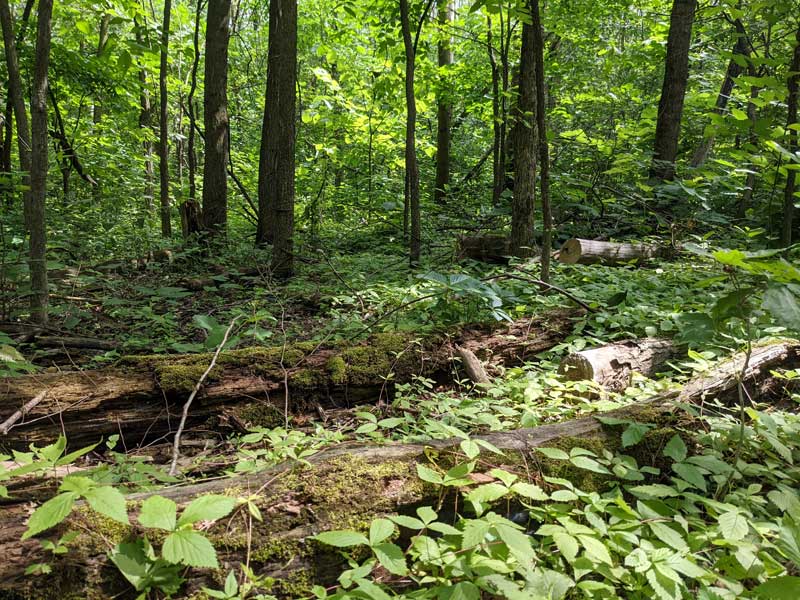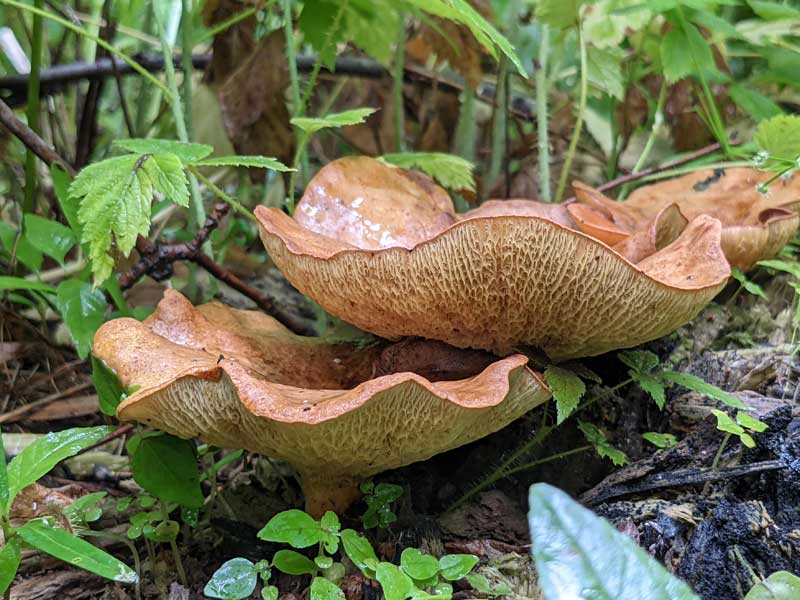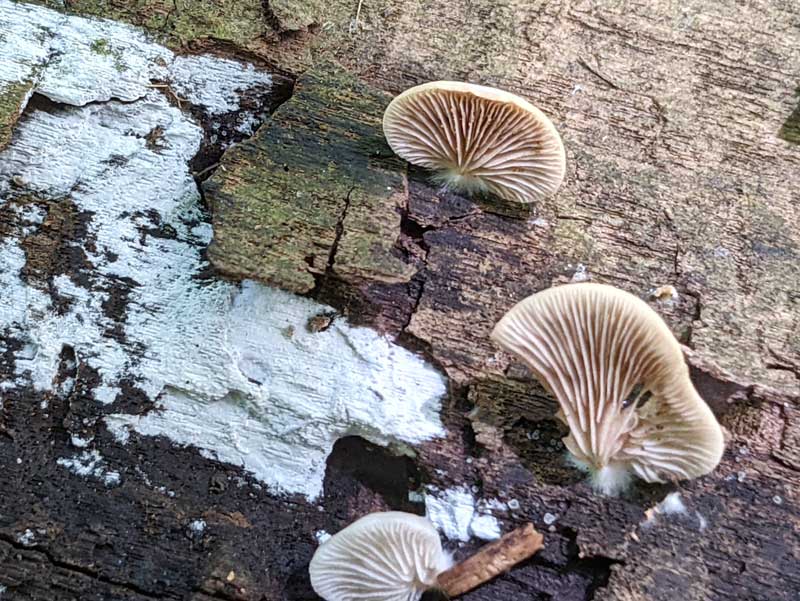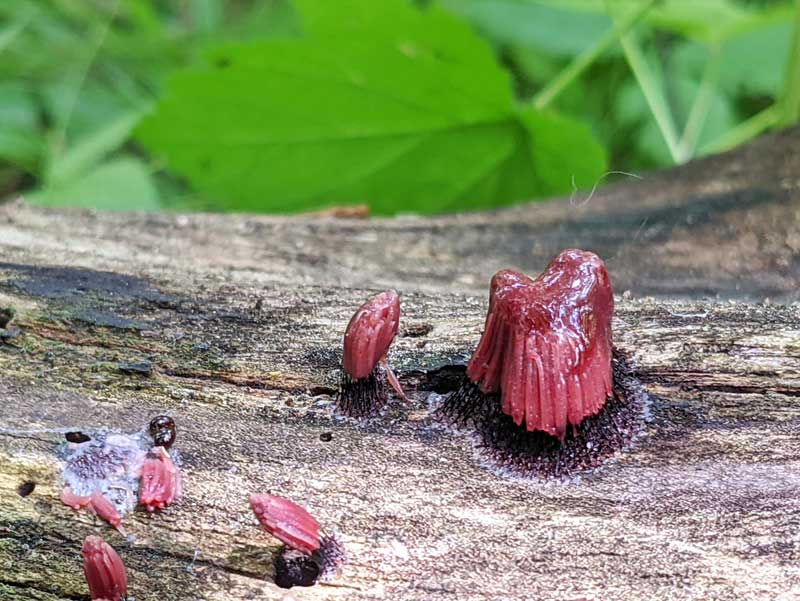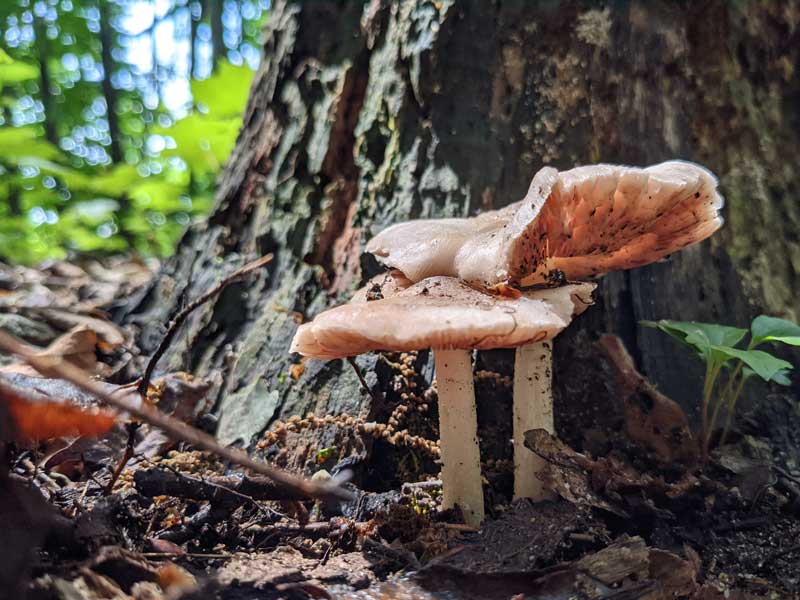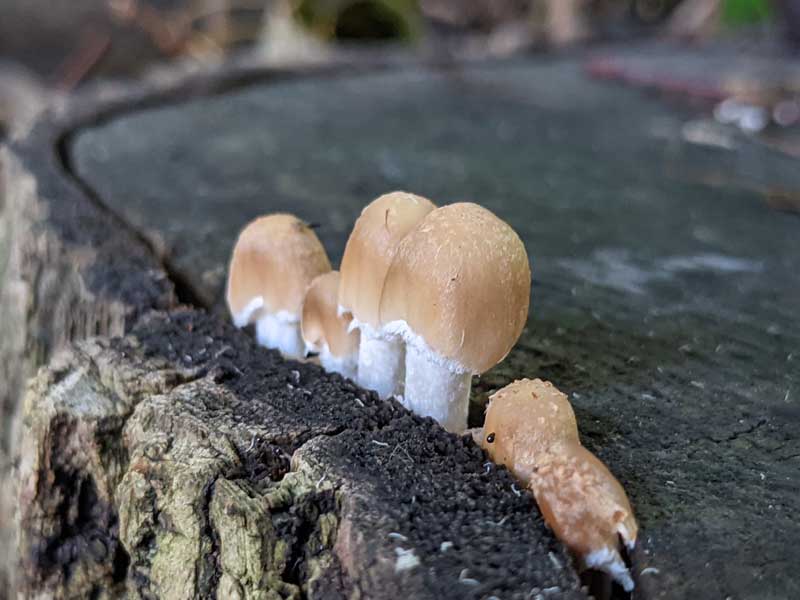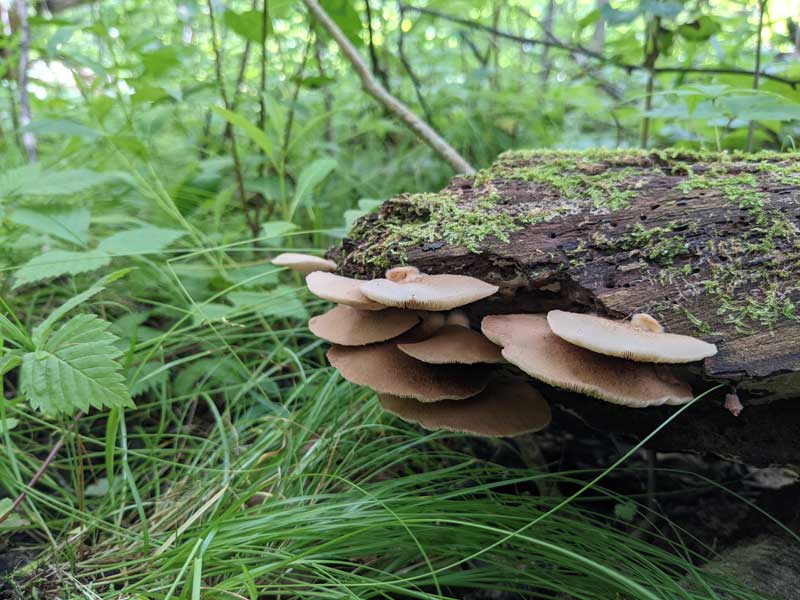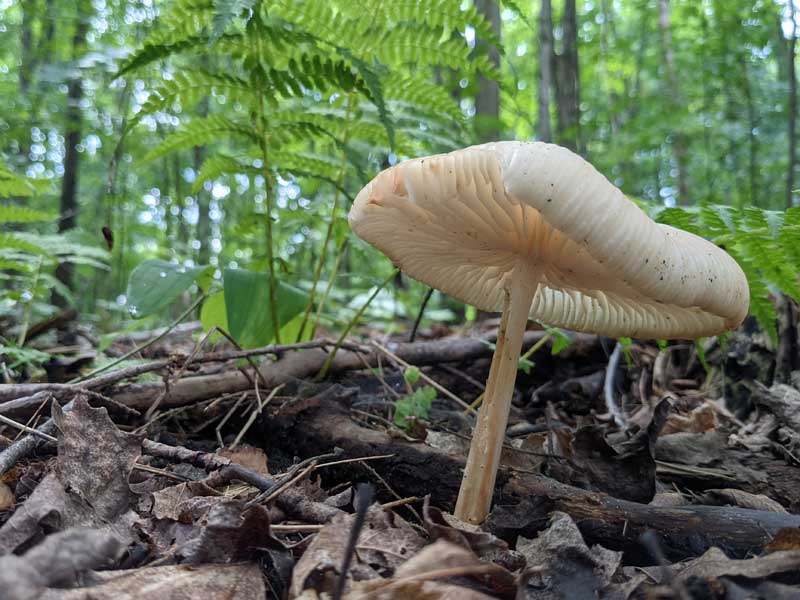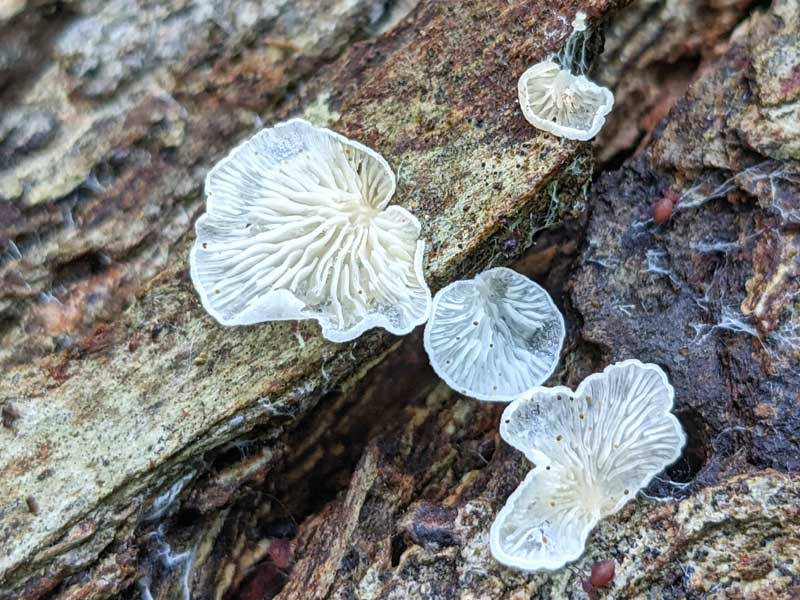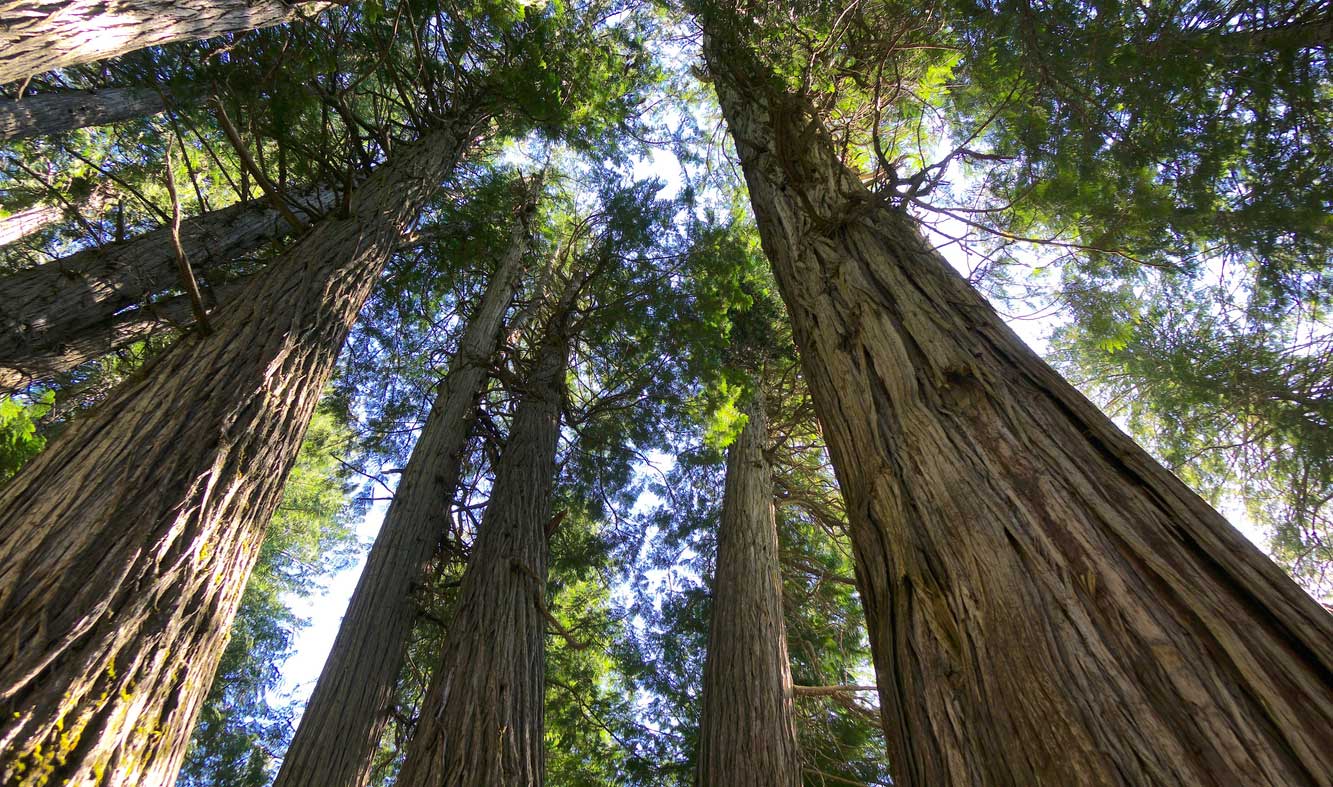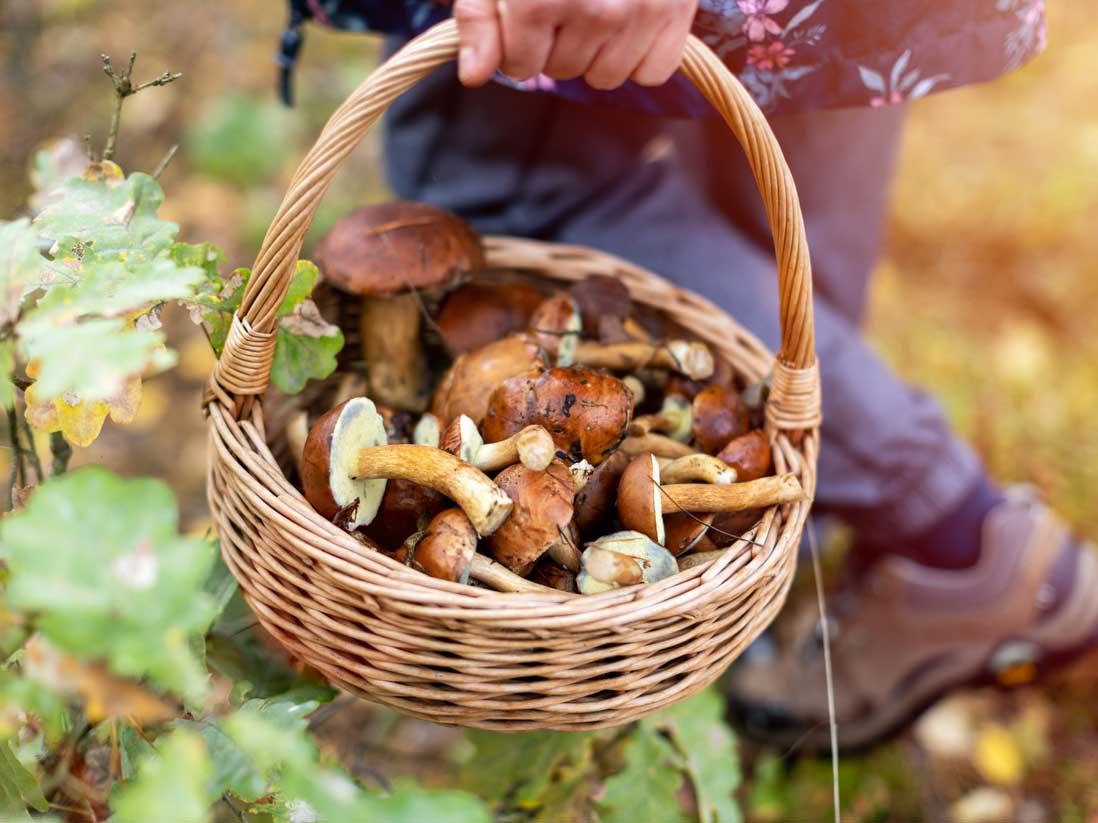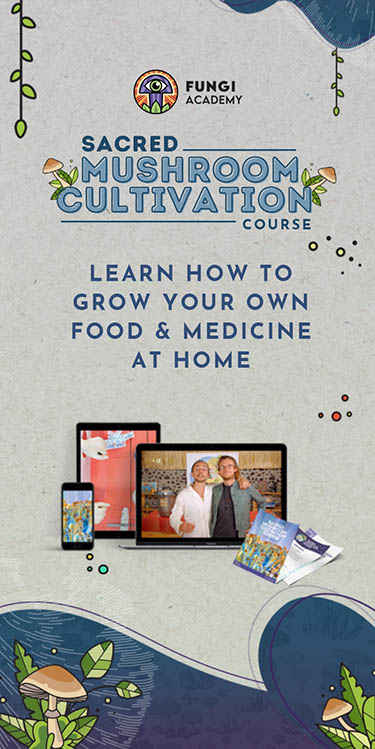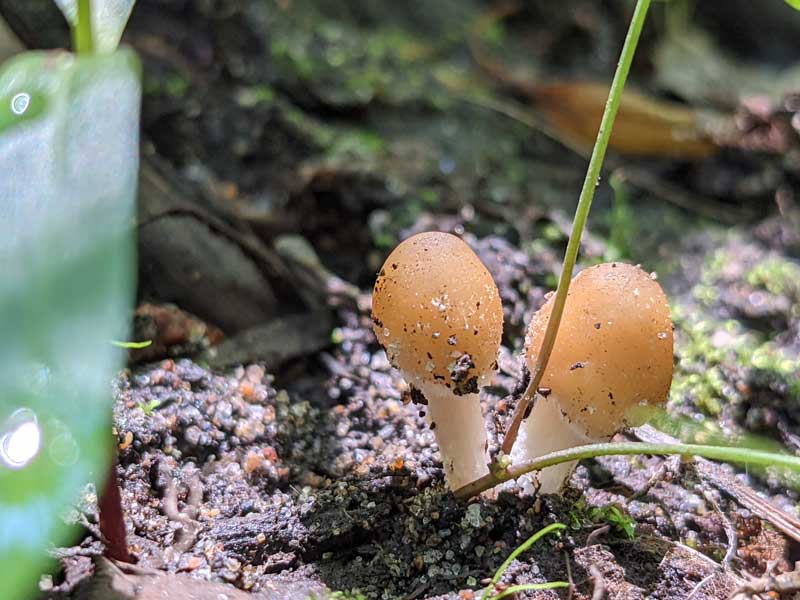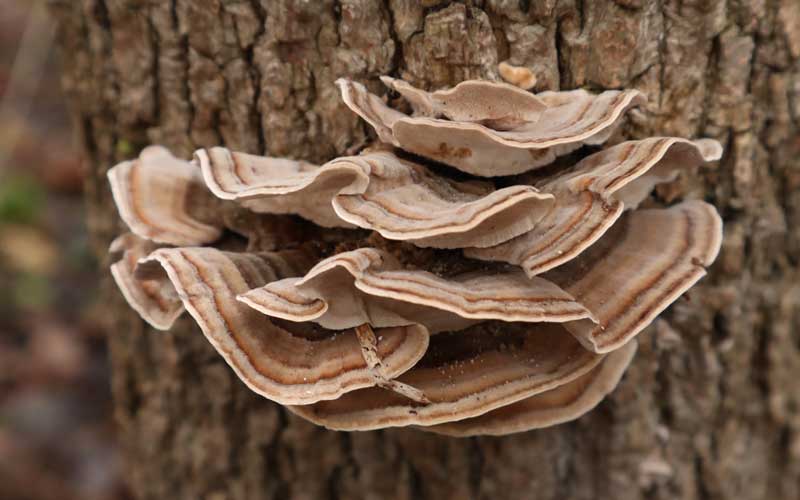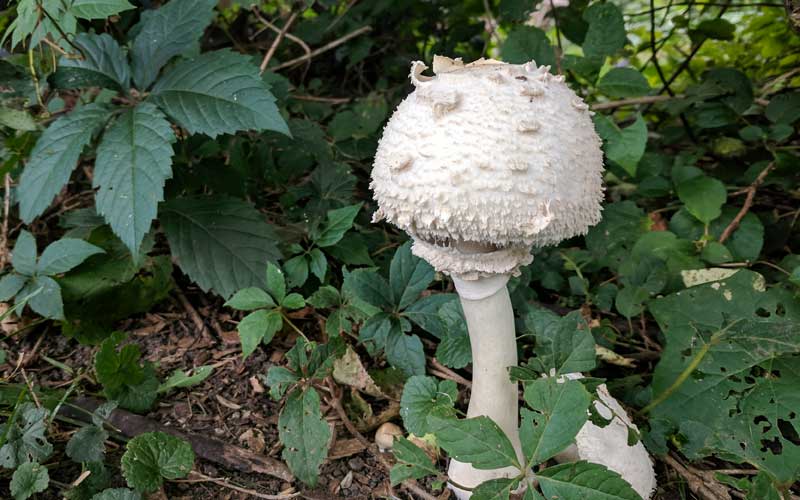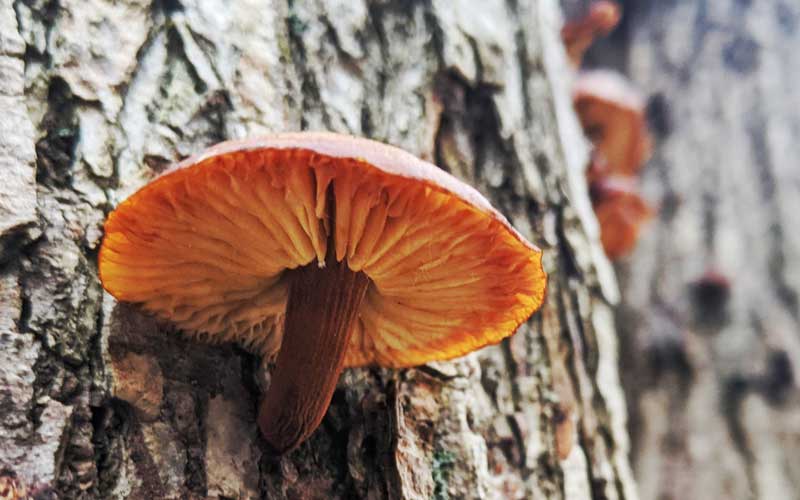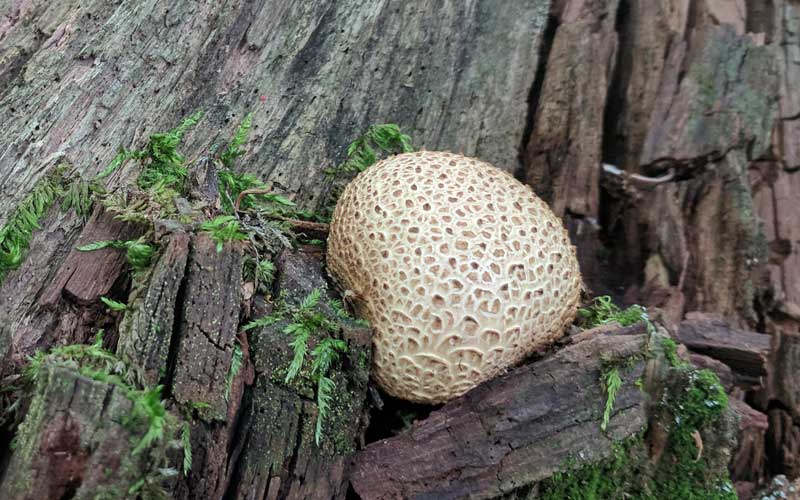- Home
- Mushroom Resources
- Mushroom Photos
My collected photos of mushrooms and fungi... Page 3.
The photos on this page, along with those on page 2, were all taken in the same plot of woodland, about 45 minutes from where we live, in southern Quebec.
I’ve written elsewhere about how mycelium contributes to the health of woodland and forests. But I think it works the other way around too.
The wood where we walk is beautifully managed. There are trails to follow, so most of the ground is left undisturbed. And fallen trees and branches are left flat on the ground, where they can be found by fungi and slowly consumed.
On our walks I get the sense that I’m seeing a huge variety of fungi simply because the wood is so fungi-friendly. So different from city parks and farmland.
As usual, I haven't tried to identify each mushroom. I'm not an expert in that area, and wouldn't want to make any mistakes.
But as you'll see... there are a couple of contenders for being the weirdest. The red growths, and the ghostly gills.
Want to see more of my mushroom and fungi photos?
Mushroom and fungi photos page 1
Mushroom and fungi photos page 2
Mushroom and fungi photos page 4
Mushroom and fungi photos page 5
Mushroom and fungi photos page 6
Related Topics:
How mushrooms and mycoforestry improve forest health.
Mycoforestry is the strategy of using mycorrhizal fungi to help damaged ecosystems—big or small—recover faster. The full article...
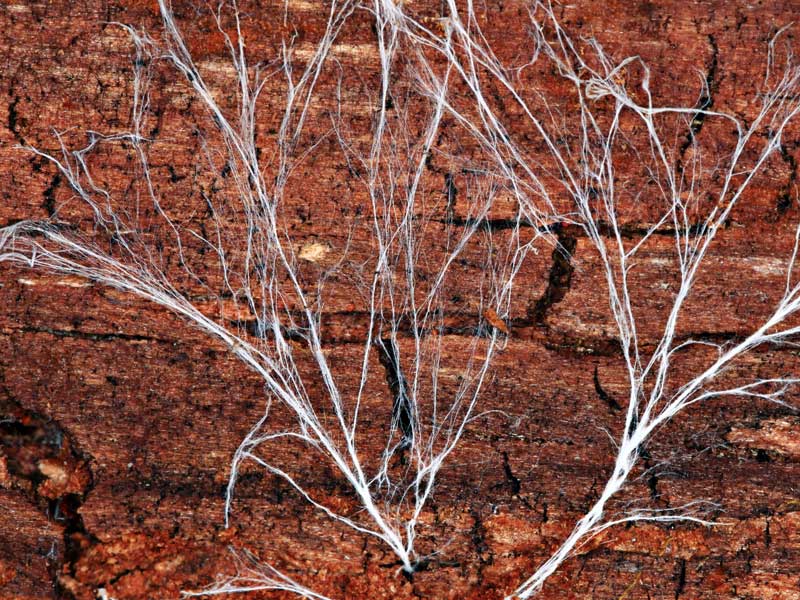
Mycelium… the underground network that connects and supports all life.
Mycelium is the miracle beneath our feet. It’s the root system of the mushrooms we see above ground, and a whole lot more. Read the full article...
A beginner’s guide to wild mushroom foraging in the woods.
With patience and commonsense, you can learn to safely forage for wild mushrooms. Careful, though. You might get hooked! The full article...
